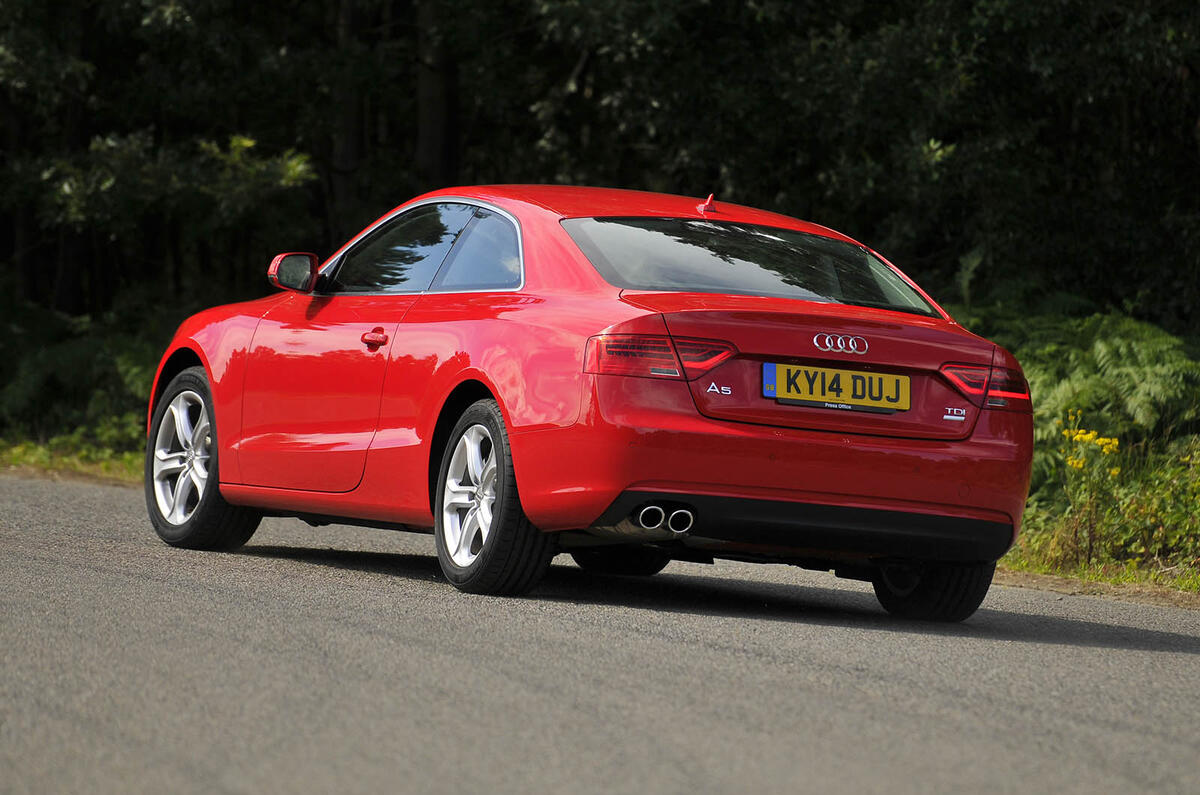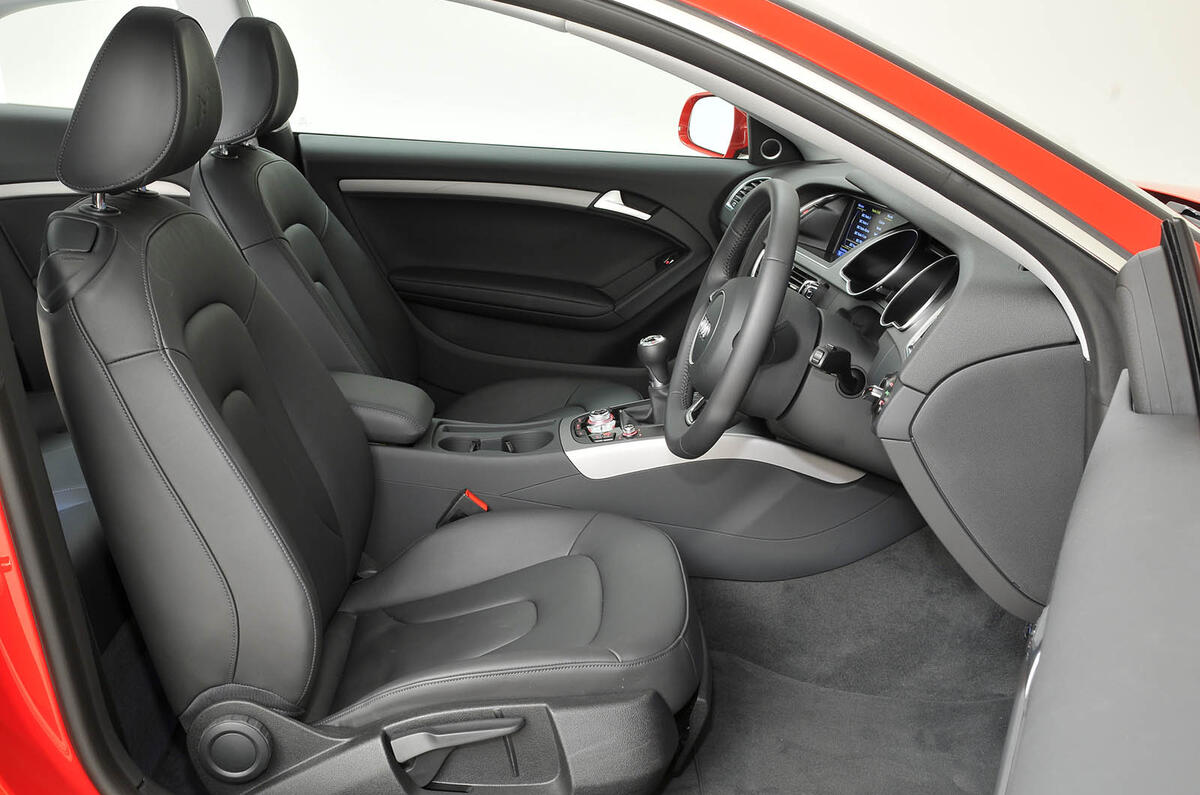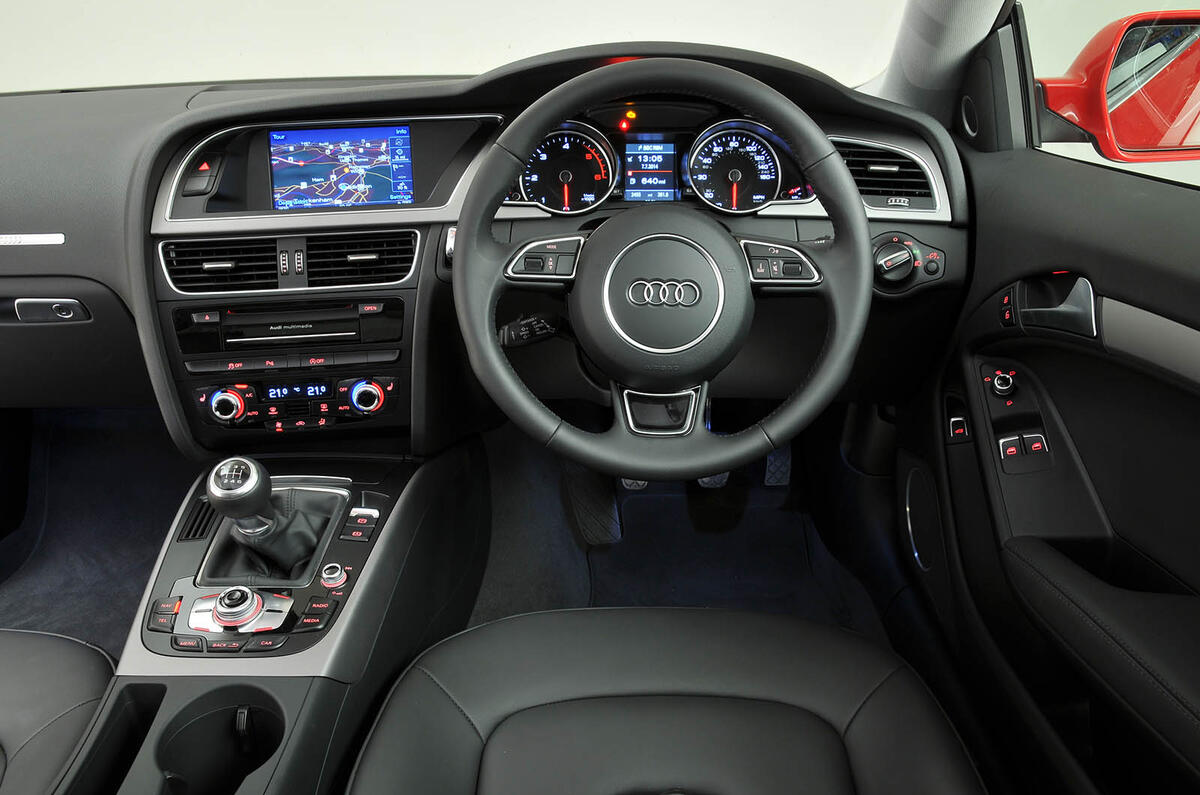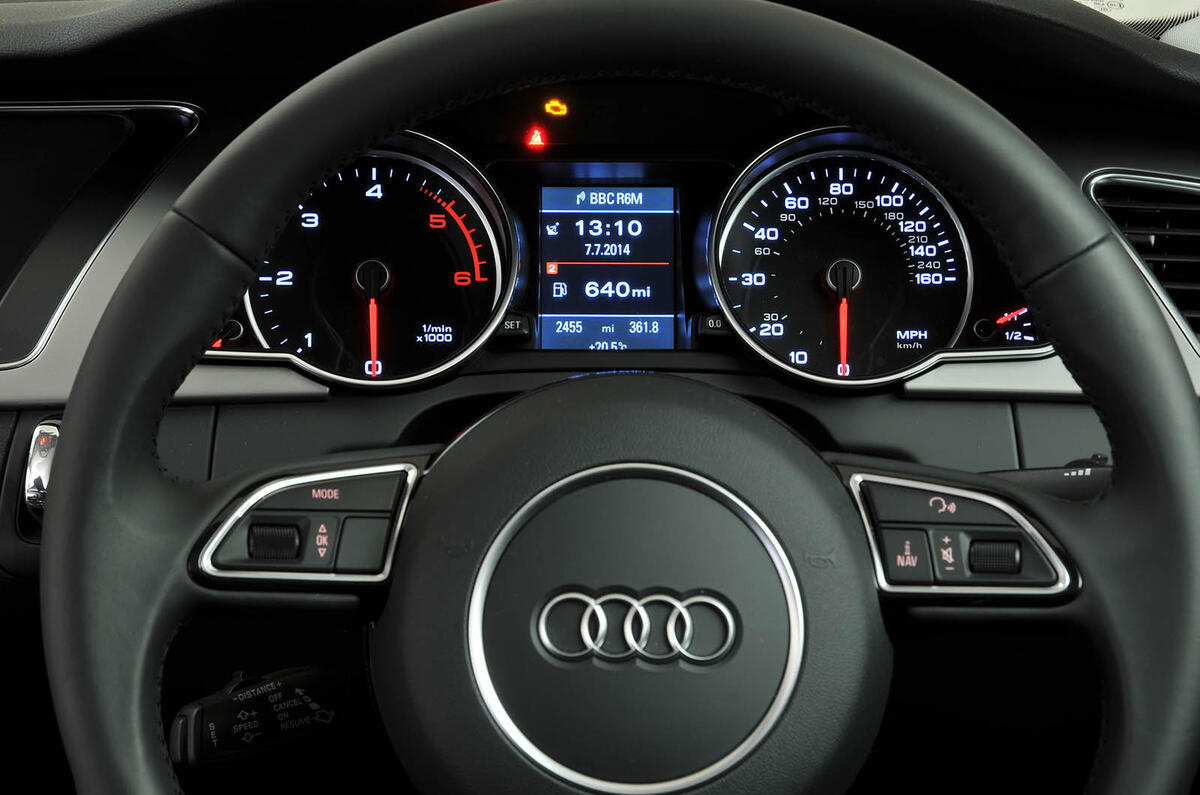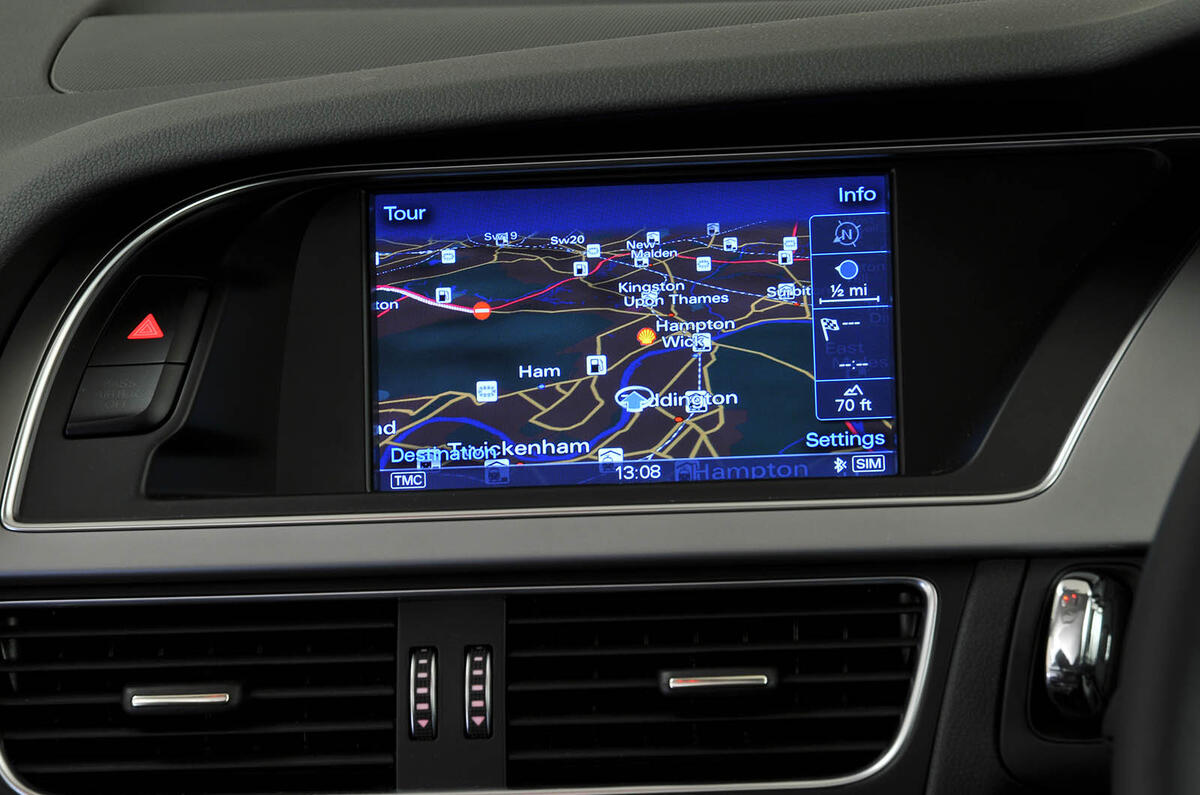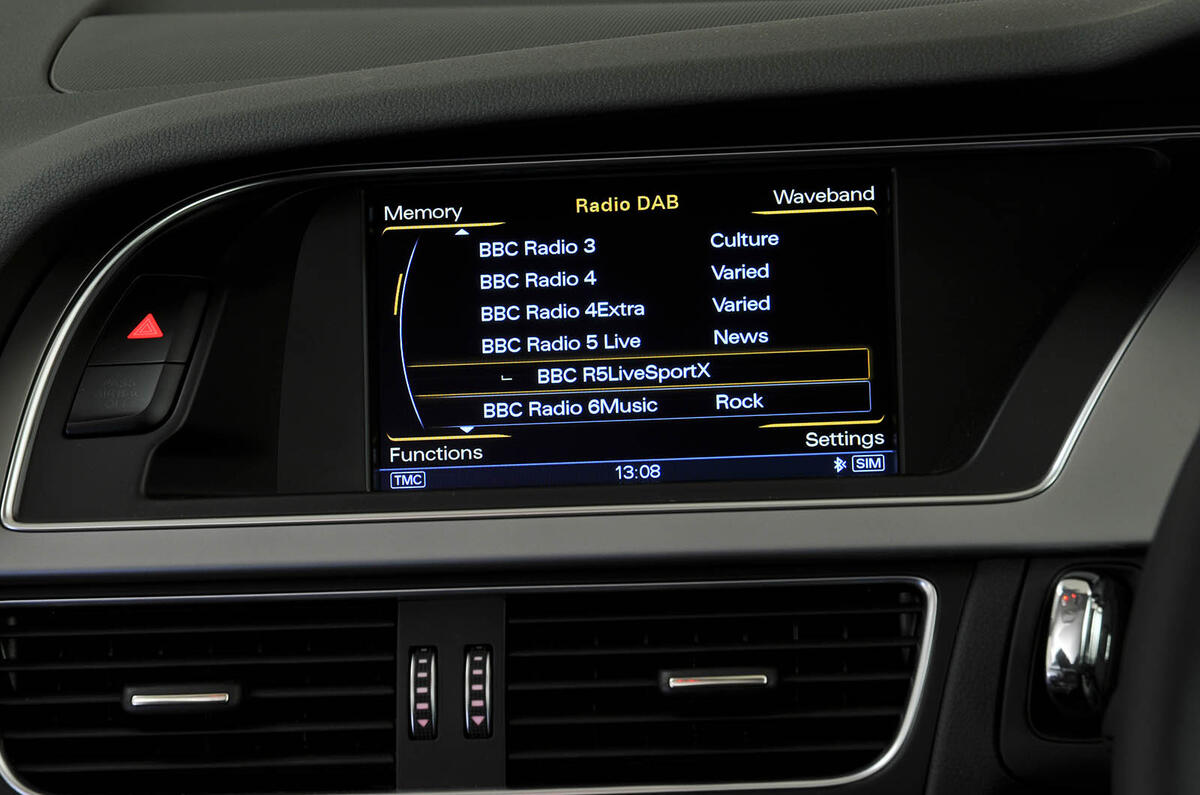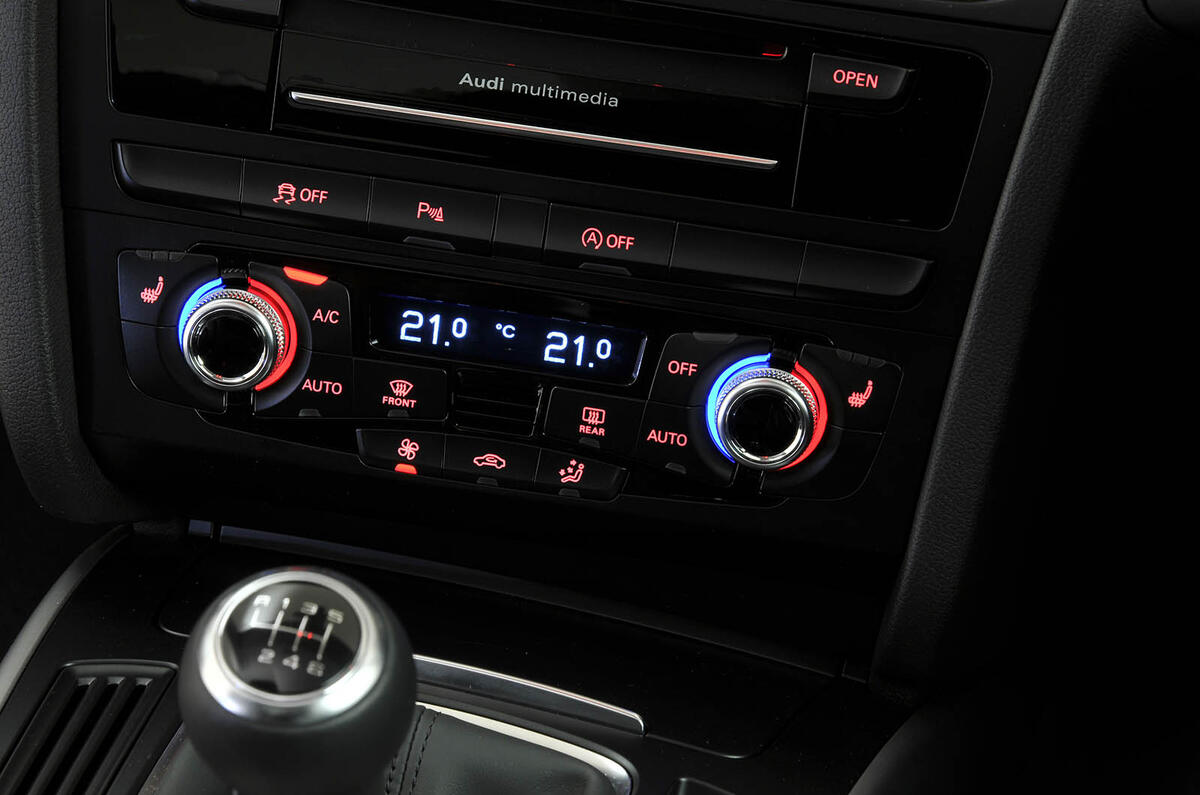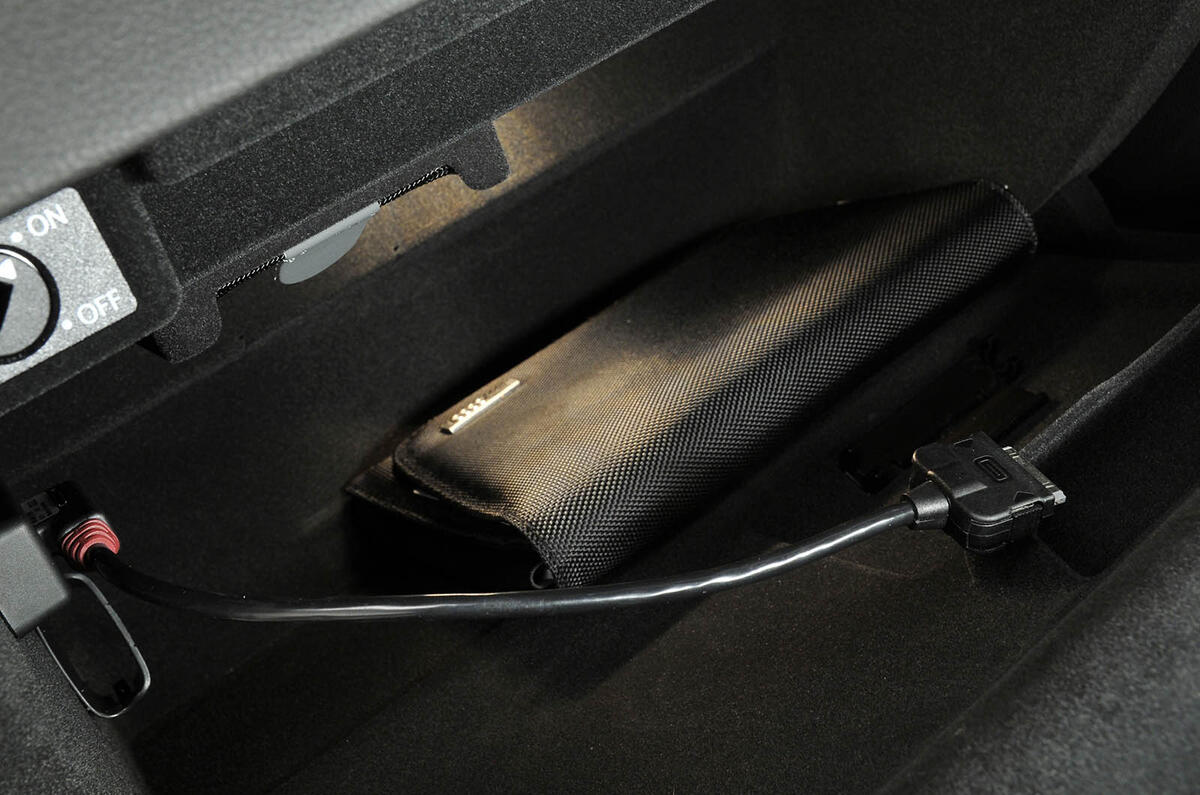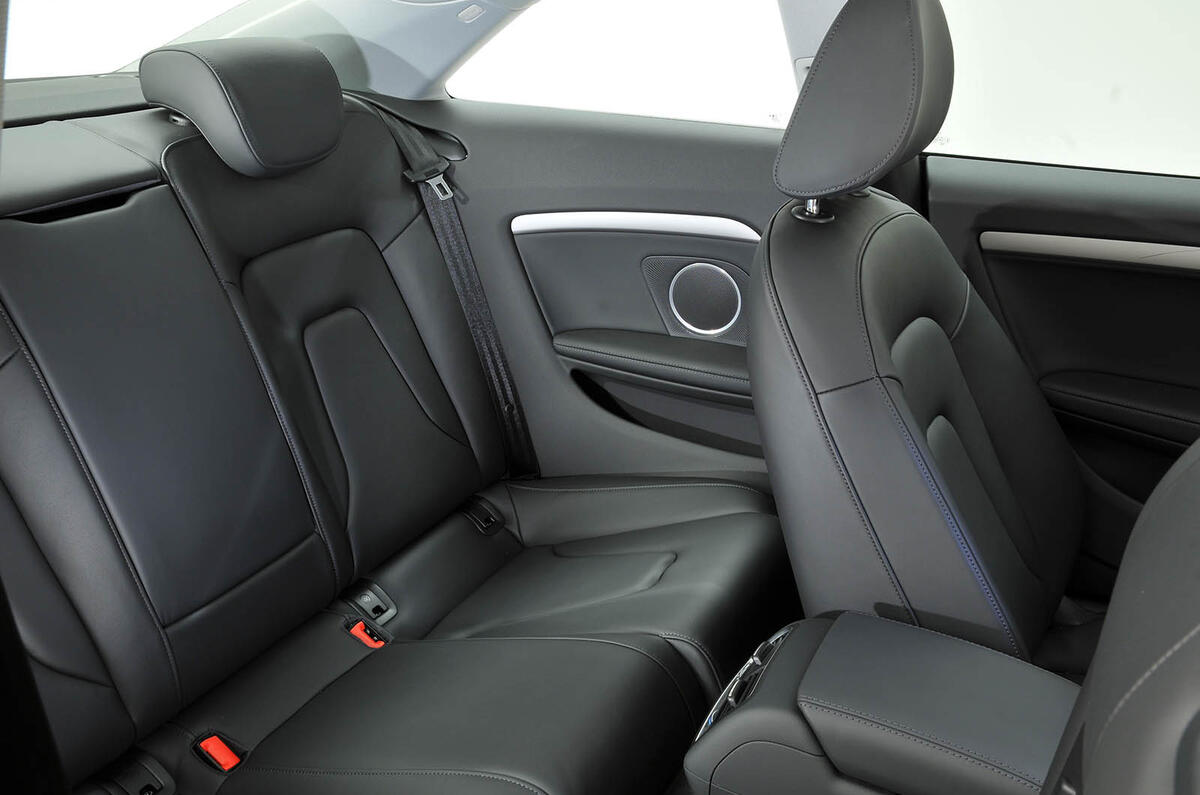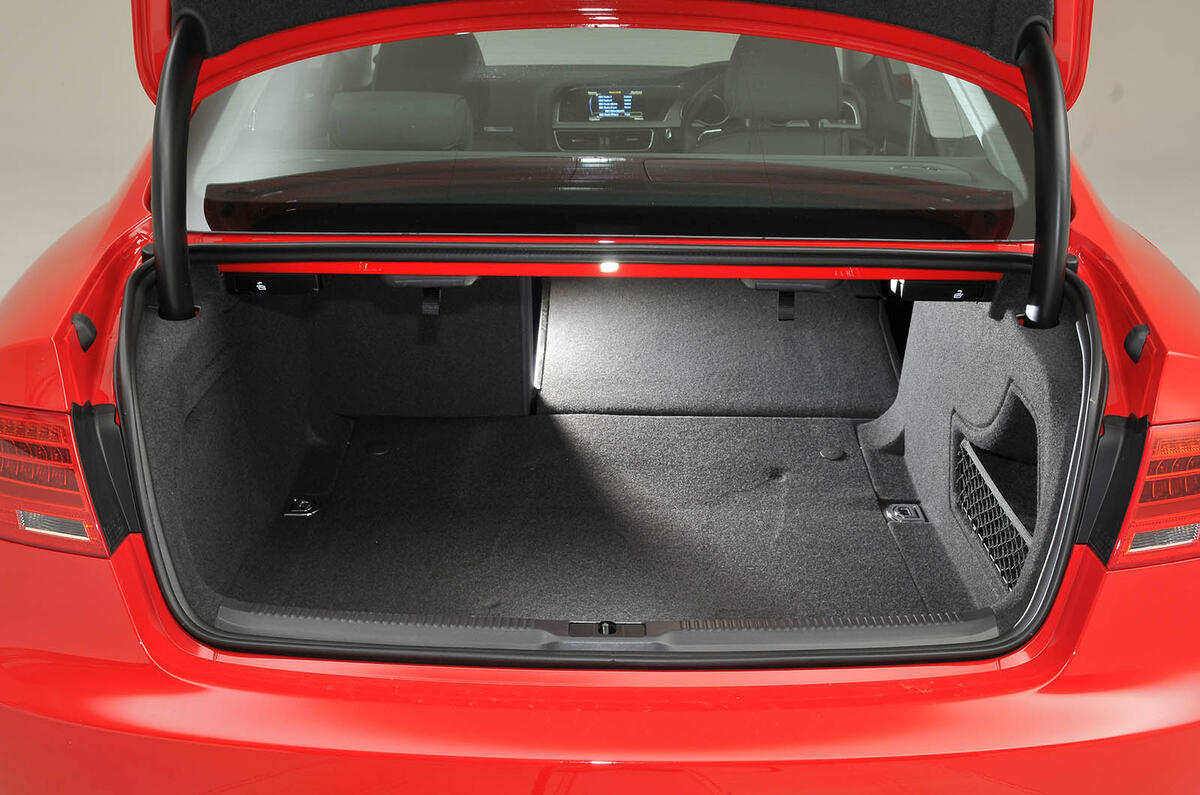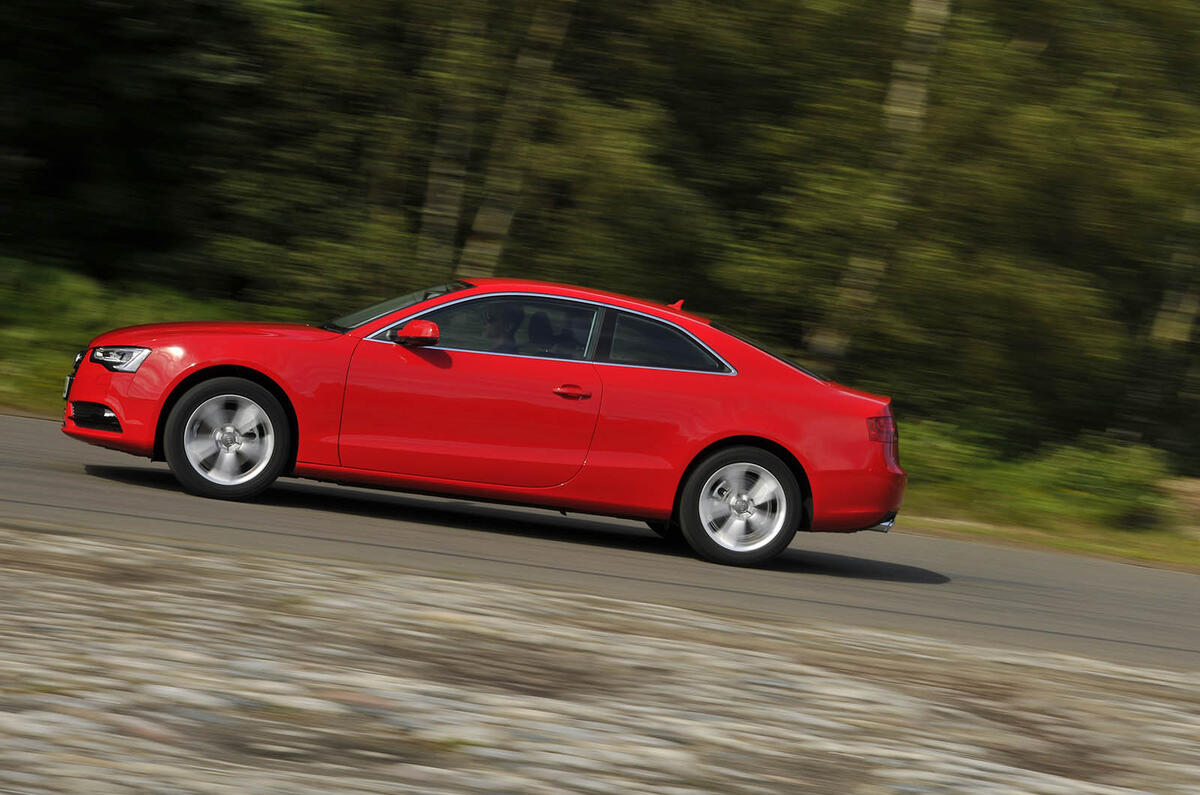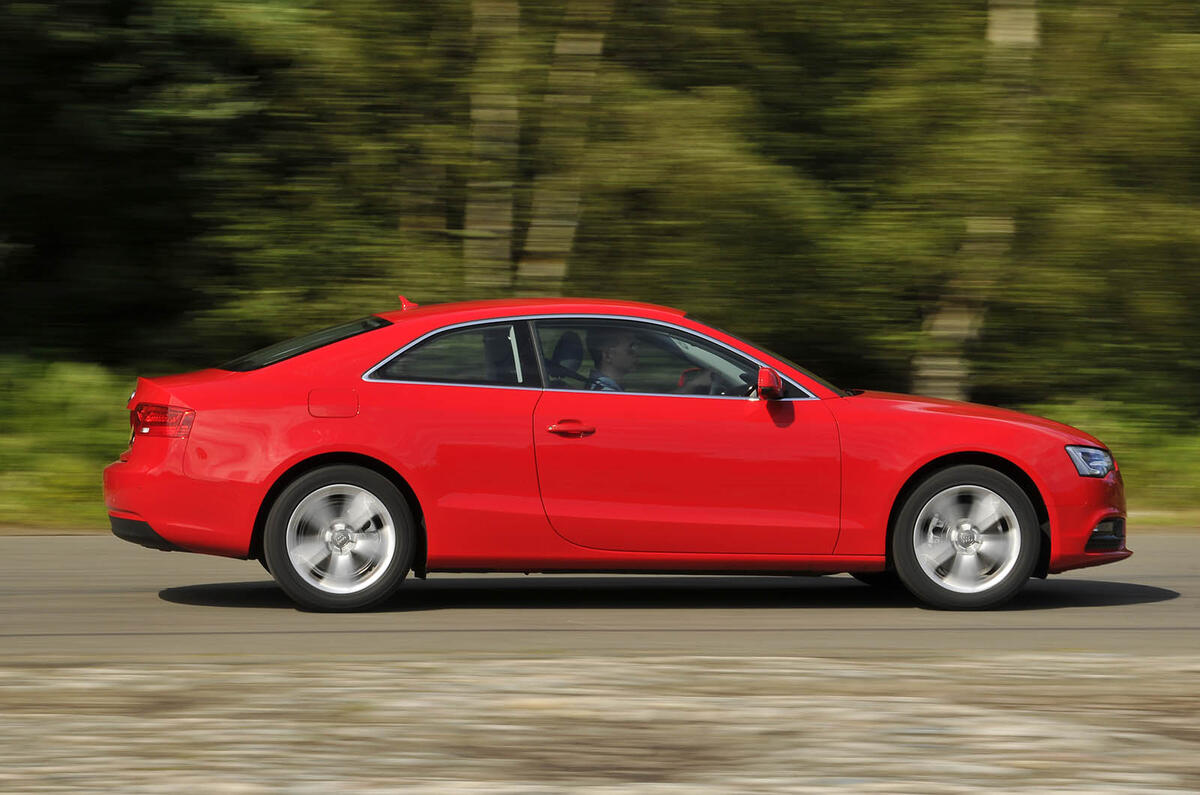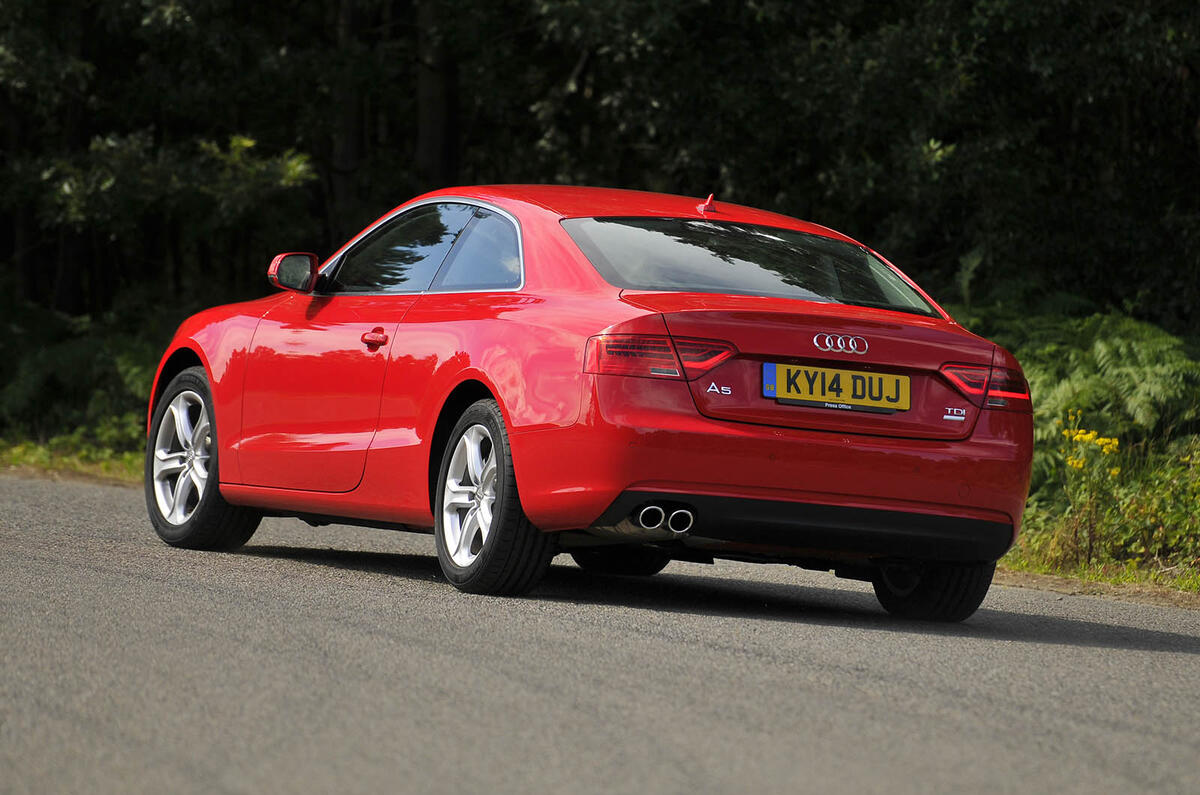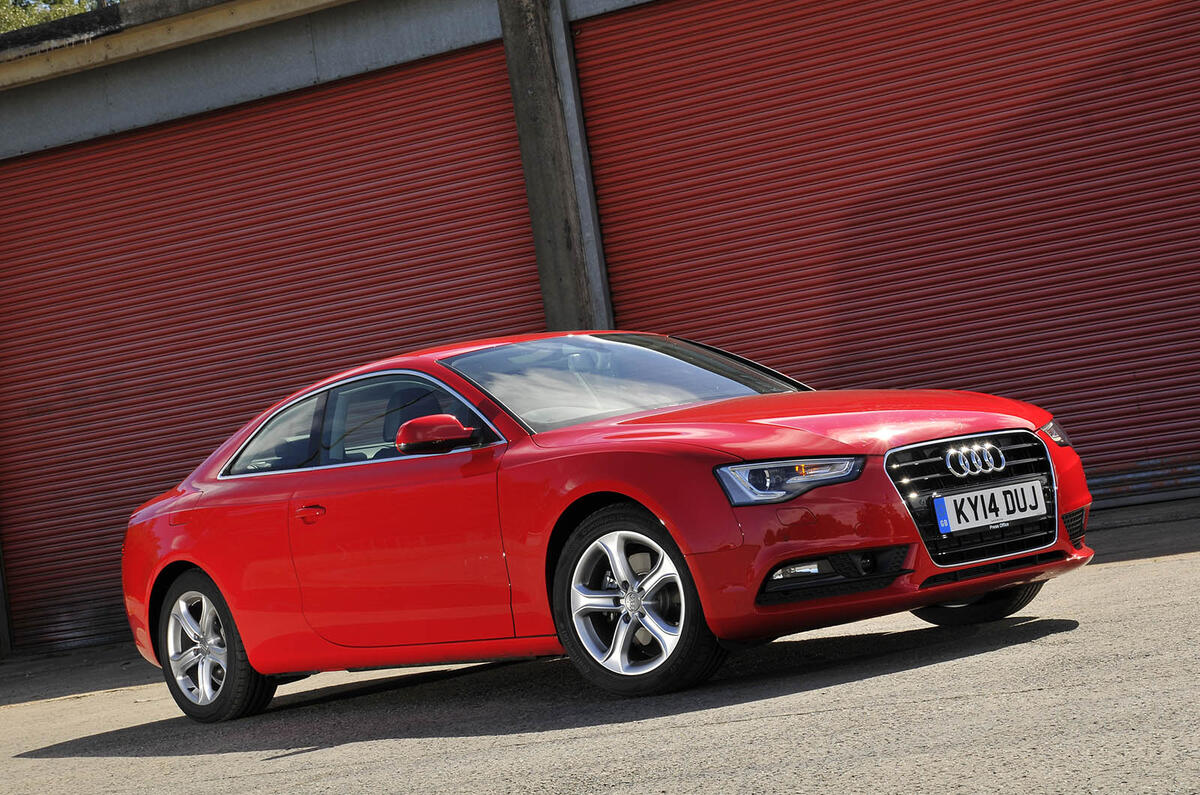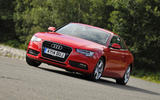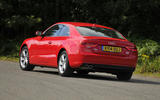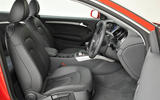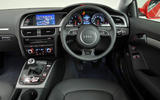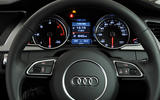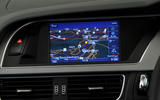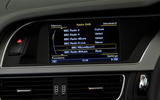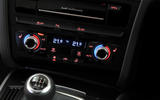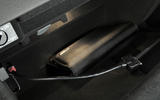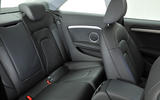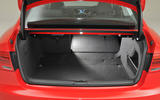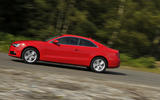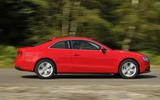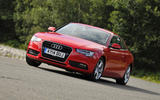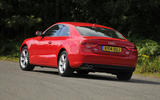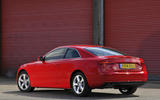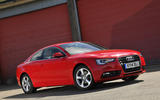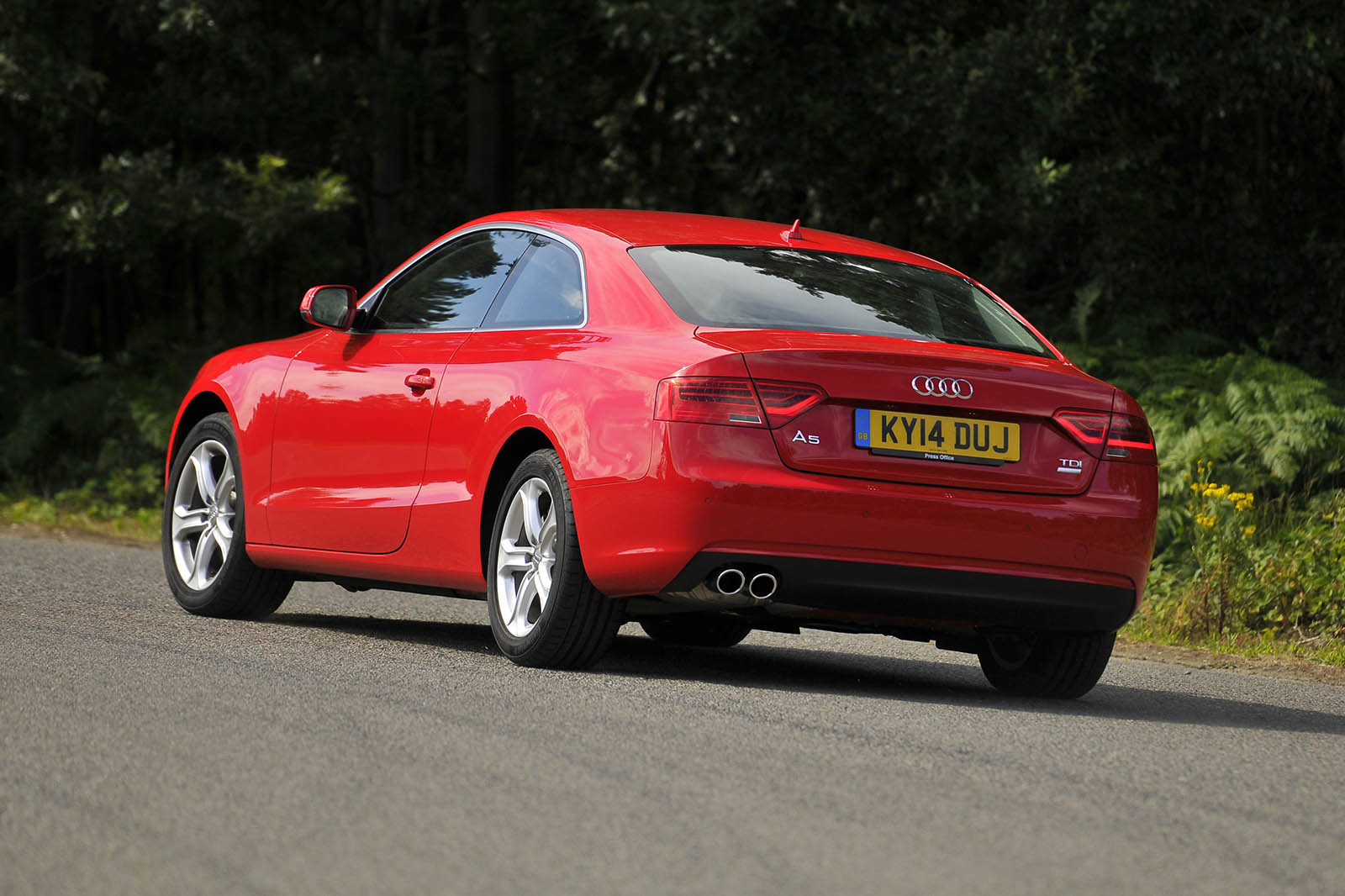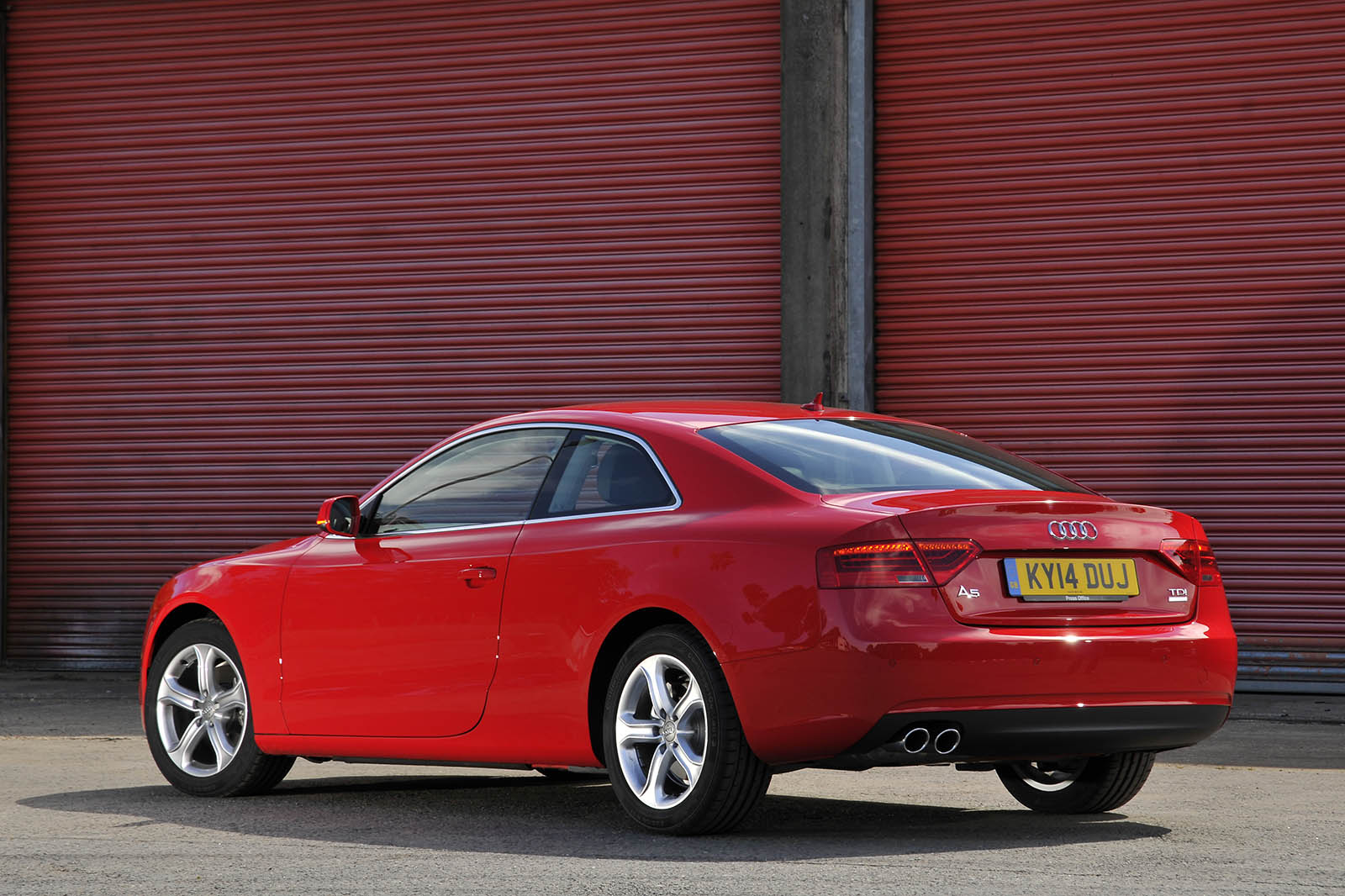The A5 is an Audi, which means a top-notch interior is expected, and in this case, it’s delivered. For Audi regulars, the cabin design is instantly familiar, yet also sufficiently unique. The design detail is more indulgent in feel than many other Audis of the period.
With the exception of the clutch pedal (set too far to the right), the controls are well-placed and driving position excellent.
Access to the rear is good on all models, although egress more awkward. Legroom is sufficient for all but the longest of leg, but the sloping roofline does mean anyone approaching six feet will be squeezed against the headlining. No question, the A5 is capable of transporting four full height adults, but a cross-continent cruiser it isn’t.
The coupe's 445-litre boot is a fraction larger than that of the BMW 3 Series, and boosted by folding rear seats, but the marginally narrow boot aperture could frustrate for more awkward loads.
On the Cabriolet some rear seat space was sacrificed to find room for the roof mechanism, but it is still big enough to be considered a genuine four-seater rather than a ‘plus two’.
The roof features one-touch power operation and Audi was justifiably proud of the mechanism’s speed. Collapsing the hood takes just 15 seconds, raising it takes just 17, and it can be operated while driving at low speeds – perfect for the vagaries of the British summer.
S-Line and S5 convertibles got an ‘acoustic’ hood to reduce noise levels in the cabin. It was available as an option on lesser versions and really helps to boost cruising refinement.
Despite the sloping roof line, the Sportback gives away just 5mm in rear headroom to the Audi A4 saloon. Under the lengthy tailgate, the Sportback has the same luggage space as the A4 four door. The boot is admirably flat-sided and when the rear seats are folded, the impressively long load bay is nearly flat. Another neat touch if the 70-30 split luggage cover.
If you are desperate to get hold of a first generation Audi A5 you have predominantly three trims to choose from - S line, Black Edition and S5. The S line trim is hardly an entry-level model, so expect a host of equipment such as - 18in alloys, 6.5in MMI infotainment system with sat nav, DAB and Bluetooth, front and rear parking sensors, xenon headlights, auto lights and wipers, Nappa leather seats, heated front seats and an aggressive S line bodykit.
The Black Edition models got a black styling kit and Audi's music interface, along with 19in alloys and a Bang & Olfsen speaker system. The S5 is a different animal to the standard A5s, with a more aggressive bodykit, an electronic limited slip differential, cruise control, a chrome twin exhaust system. But the headline addition to the S5 is the turbocharged 3.0-litre V6 engine.
The 2017 models were available in four trims - SE, Sport, S line and S5. The entry-level SE trim comes with 17in alloys, the latest 7in MMI infotainment system with DAB and two USB ports. It was also be equipped with leather upholstery, three-zone climate control and heated front seats. Opt for the mid-range Sport spec and you will receive sat nav and electrically adjustable front seats, while the range-topping S line trim gets sports suspension and an aggressive bodykit.
The hot S5 gets 19in alloys, a sportier bodykit and suspension, 8.3in MMI infotainment system with 3D mapping, massaging front seats and quad-exhaust system. New to the Audi A5 range at the time was a range of new safety technology including Audi Pre Sense City, which included a collision warning system and pedestrian protection system.



